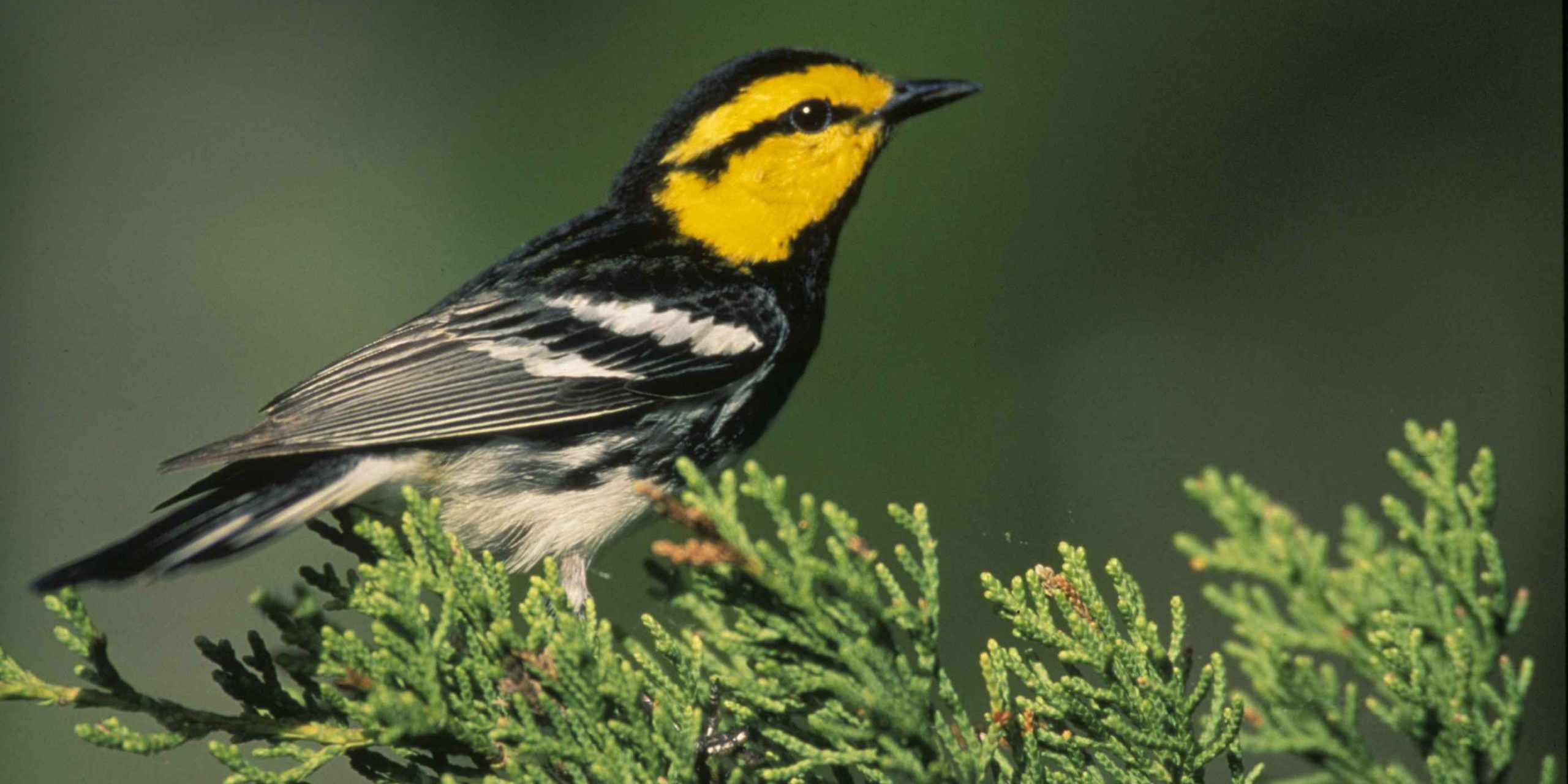Golden-cheeked Warbler
The Golden-cheeked Warbler is a migratory songbird that spends its breeding season from March to June on the Edwards Plateau of central Texas. The bird was listed as endangered under the ESA in 1990. The USFWS completed a five-year status review of the species in 2014, which found that the endangered status was still valid because it was “threatened by ongoing and imminent habitat loss”. The 2014 review noted that 29% of the Texas breeding season habitat had been lost in the ten-year period ending in 2011.
Common Name:
Golden-cheeked Warbler
Scientific Name:
Setophaga chrysoparia
USFWS Endangered Species Act Status:
Endangered
TPWD Species Conservation Status:
Endangered
Distribution;
Central Texas counties west of I35
Physical Description:
Golden-cheeked Warbler males have yellow feathers on the cheeks outlined by dark black plumage. The throat, back, legs, beak and breast are also black. The lower end of the breast and belly are white with black streaks or spots. The wings are black with two white bars and the tail is black and white. The female is similarly colored except the colors are duller than the male. The plumage on the back has an olive-green color with thin black streaks and the center of the throat colored yellow (Pulich 1976).
Life History:
Golden-cheeked Warblers have documented lifespans of more than 10 years. Starting in March the females lay clutches of three to four eggs and incubate them for 12 days in the trees of mixed Ashe juniper woodlands. The female continues to brood the hatched juveniles for nine days before fledging begins. When the fledglings are able, the Golden-cheeked Warblers will migrate to the mixed conifer oak woodlands in the mountains of southern Mexico and Central America from July to October (Pulich 1976).
Habitat and Diet:
During the spring and early summer breeding season, the Golden-cheeked Warbler relies on available resources in the established Oak and Ashe juniper mixed woodland forests of the Texas Hill Country for nest building materials and food sources such as insects and arachnids (Pulich 1976). Although Ashe juniper is the dominant tree species, nesting habitat will often contain a mixture of Texas oak, Scaly bark oak, Cedar elm, Plateau live oak, Little walnut, Hackberry, and Texas ash (Ladd 1985).
References:
Keddy-Hector, D. P., and Beardmore, C. J. (1992). Golden-Cheeked Warbler (Dendroica chrysoparia) Recovery Plan. Report Prepared by Texas Parks and Wildlife Department. Austin, Texas.
Ladd, C.G. 1985. Nesting habitat requirements of the Golden-cheeked Warbler. unpublished MS Thesis. Southwest Texas State University, San Marcos, Texas.
Pulich, W.M.(1976). The Golden-cheeked Warbler, A bioecological study. Report prepared by Texas Parks and Wildlife Department. Austin, Texas.

